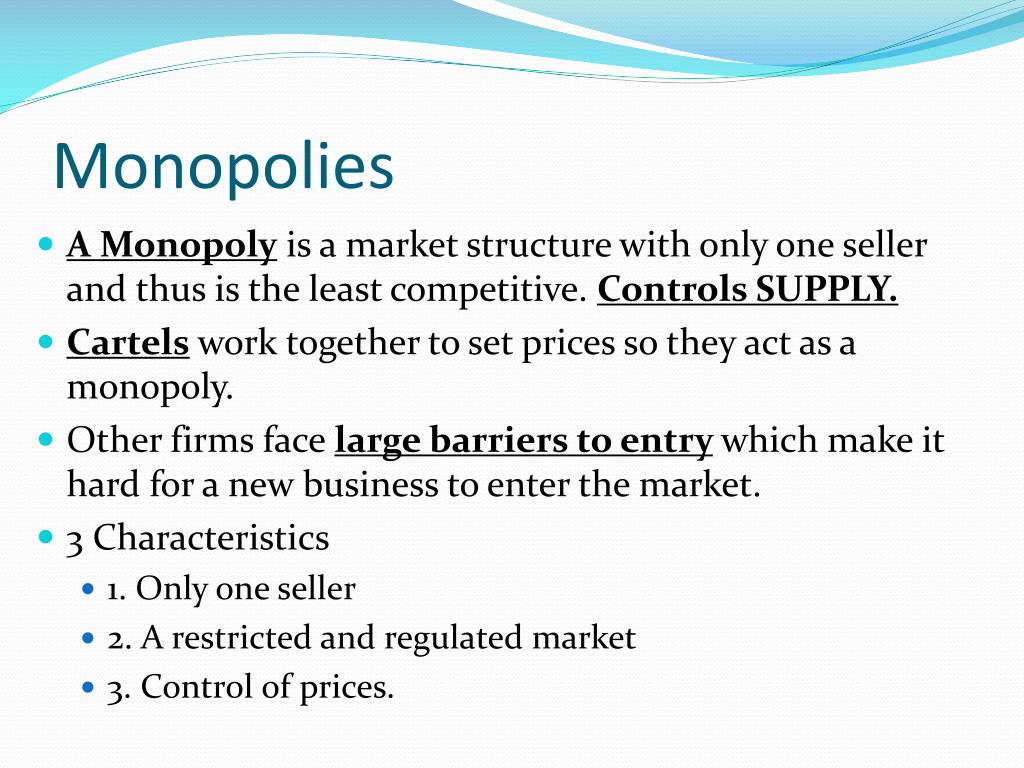

In this situation, the market has room for only one producer. Now consider the market demand curve in the diagram, which intersects the long-run average cost (LRAC) curve at an output level of 5,000 planes per year and at a price P 1, which is higher than P 0. It shows economies of scale up to an output of 8,000 planes per year and a price of P 0, then constant returns to scale from 8,000 to 20,000 planes per year, and diseconomies of scale at a quantity of production greater than 20,000 planes per year. Figure 9.2 presents a long-run average cost curve for the airplane manufacturing industry. (We introduced this theme in Production, Cost and Industry Structure). Natural MonopolyĮconomies of scale can combine with the size of the market to limit competition. There are five types of monopoly, based on the types of barriers to entry they exploit. Thus, in markets with significant barriers to entry, it is not necessarily true that abnormally high profits will attract new firms, and that this entry of new firms will eventually cause the price to decline so that surviving firms earn only a normal level of profit in the long run. Barriers may block entry even if the firm or firms currently in the market are earning profits. In other cases, they may limit competition to a few firms. In some cases, barriers to entry may lead to monopoly. Once an entrepreneur or firm has purchased the rights to all of them, no new competitors can enter the market. For example, there are a finite number of radio frequencies available for broadcasting. Barriers to entry can range from the simple and easily surmountable, such as the cost of renting retail space, to the extremely restrictive. Barriers to entry are the legal, technological, or market forces that discourage or prevent potential competitors from entering a market. These profits should attract vigorous competition as we described in Perfect Competition, and yet, because of one particular characteristic of monopoly, they do not.


Distinguish between a natural monopoly and a legal monopoly.By the end of this section, you will be able to:


 0 kommentar(er)
0 kommentar(er)
